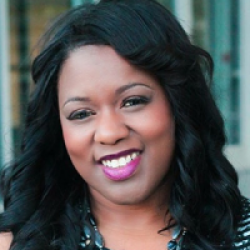 Someone at a workshop I was facilitating recently asked me how was I able to guide my school’s teachers and students in raising our high school’s End of Course (EOC) state assessment scores by 40-50%.
Someone at a workshop I was facilitating recently asked me how was I able to guide my school’s teachers and students in raising our high school’s End of Course (EOC) state assessment scores by 40-50%.
My answer? It was leadership that focused on the three C’s of Culture, Collaboration, and Commitment. Collaboration is one of the most important components of building effective school culture.
In Project Based Learning, collaboration and culture are essential for leaders, teachers, and students.
Everyone must be committed to the vision and high expectations of academic success. Having served as principal of a wall-to-wall PBL school, my first goal was to improve the culture of the school. This focus quickly moved to collaborative efforts among all teachers, which helped to improve the environment to be more supportive and conducive to learning for ALL.
The greatest concern expressed by administrators in my workshop was, how do I support PBL classrooms and align those strategies for high performance on state assessments? They wanted to know what they were missing and how was this different from traditional classrooms.
Studies have shown that high academic performance is tied directly to school-wide collaboration.
Although much of our successes and increase in student performance was attributed to effective project planning, alignment to standards, progress monitoring, and having a leader to guide teachers through the PBL process with fidelity, there were still many examples of inconsistency in following the process and holding all accountable.
As a leader, I understood that to capture the sense of team building amongst my staff and improve in project planning, I had to guide teachers in reflecting upon the process and the desired outcomes for student achievement. Our data showed that teachers needed additional PBL support to be successful. Previously, lack of additional support for PBL caused teachers to revert to their level of comfort, which was lecturing while students take notes.
What I found to be most successful as a PBL principal was allowing teachers to have a voice in sharing results and methods used in successful lessons, as well as bringing artifacts to support their explanations.
The initial objective was to create a professional learning community and develop a strategy to emphasize the need for team building and strong collaboration. As the administrator, I wanted to see these practices embedded into the culture of the school.
As we began to see increased student achievement, there was evidence of more quality in planning projects and opportunities to collaborate on issues. There was a clearer understanding of the alignment of standards, more engaging instructional strategies, creative project ideas, and effective professional development.
Here are three strategies that supported our PBL classrooms.
1. Use Professional Learning Communities (PLCs) as teacher learning opportunities.
PLC’s include professional development, clarifying schoolwide goals, status checks toward outcome goals, and allowing teachers to ask questions and get needed help (best practices that leaders and teachers often lose sight of when planning projects). I gave teachers time to reflect upon their own instructional practices.
For instance, teachers often struggled with keeping standards aligned throughout the project, so I asked them to create SMART goals to guide PLC training to address this. Student work samples, instructional material, and data talks were all aligned with the projects being implemented in the classroom, based on the particular standards of the project.
2. Supporting the vision of PBL. Leaders cannot support what they do not know.
One of the greatest successes that I have had as a PBL leader is supporting teacher learning. I facilitated weekly staff meetings and planning meetings using key elements of PBL, such as a driving questions, feedback protocols, and celebrations, just to name a few.
Sharing stories of struggles and successes in different projects, allowing teachers to think deeper and everyone to reflect, helped connect us as a school. Every Monday, I sent out a weekly newsletter that shared PBL readings, videos, and a weekly PBL focus. Leaders who support the vision must model ownership, to increase buy-in.
3. Using reflection/feedback to improve academic success.
Leaders coach during success and failures. Our team was able to raise scores significantly by reflecting on both. During every phase of the project, teachers reflected and received feedback from peers and administrators. Looking at student work as a feedback tool was the most impactful, because it guided the instruction and identified academic gaps.

